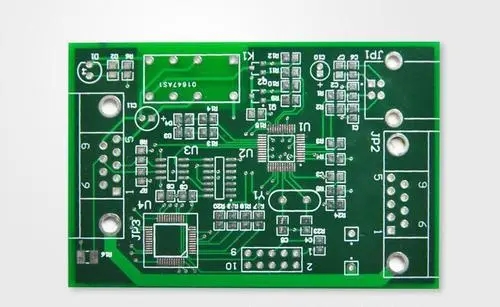What is a differential signal? In layman's terms, the driving end sends two equal-valued and inverted signals, and the receiving end judges the logic state "0" or "1" by comparing the difference between the two voltages. The pair of wires carrying the differential signal is called the differential wire. How to calculate the differential line impedance? The impedance of various differential signals is different, such as USB D+ D-, the differential line impedance is 90ohm, and the 1394 differential line is 110ohm. It is best to read the specification or related information first. There are many tools for calculating impedance, such as Polar's si9000. The factors that affect differential impedance are line width, differential line spacing, dielectric constant, and thickness of the medium (the thickness of the medium between the differential line and the reference plane). Generally, it is to adjust the difference. Line spacing and line width are used to control the differential impedance. When making the board, you should also explain to the PCB manufacturer which lines should control the impedance. A differential signal uses a numerical value to represent the difference between two physical quantities. Strictly speaking, all voltage signals are differential, because one voltage can only be relative to another voltage. In some systems, the system'ground' is used as the voltage reference point. When'ground' is used as a voltage measurement reference, this signal planning is called single-ended. We use this term because the signal is represented by the voltage on a single conductor.

For PCB LAYOUT engineers, the most concern is how to ensure that these advantages of differential wiring can be fully utilized in actual wiring. Perhaps anyone who has been in touch with Layout will understand the general requirements of differential wiring. PCB design is "equal length and equal distance". The equal length is to ensure that the two differential signals maintain opposite polarities at all times and reduce the common mode component; the equal distance is mainly to ensure that the differential impedances of the two are consistent and reduce reflection. "As close as possible" is sometimes one of the requirements of differential wiring. Differential traces can also run in different signal layers, but this method is generally not recommended, because the differences in impedance and vias produced by different layers will destroy the effect of differential mode transmission and introduce common mode noise. In addition, if the adjacent two layers are not tightly coupled, it will reduce the ability of the differential trace to resist noise, but if you can maintain a proper distance from the surrounding traces, crosstalk is not a problem. At general frequencies (below GHz), EMI will not be a serious problem. Experiments show that the attenuation of radiated energy at a distance of 500 mils from a differential trace has reached 60 dB at a distance of 3 meters, which is sufficient to meet the FCC electromagnetic radiation standard. The designer does not have to worry too much about the electromagnetic incompatibility caused by insufficient differential line coupling. But all these rules are not used to mechanically apply, and many engineers seem to still not understand the essence of high-speed differential signal transmission. The following focuses on several common misunderstandings in PCB board differential signal design.
believes that the differential trace must be very close. Keeping the differential traces close is nothing more than to enhance their coupling, which can not only improve immunity to noise, but also make full use of the opposite polarity of the magnetic field to offset electromagnetic interference to the outside world. Although this approach is very beneficial in most cases, it is not absolute. If we can ensure that they are fully shielded from external interference, then we do not need to use strong coupling to achieve anti-interference. And the purpose of suppressing EMI. How to ensure good isolation and shielding of differential traces? Increasing the distance between traces and other signal traces is one of the most basic ways. The electromagnetic field energy decreases with the square of the distance. Generally, the line spacing exceeds 4 times the line. When it is wide, the interference between them is extremely weak and can basically be ignored. In addition, isolation by the ground plane can also play a good shielding effect. This structure is often used in the design of high-frequency (above 10G) IC package PCBs. It is called a CPW structure, which can ensure strict differential impedance. Control (2Z0).